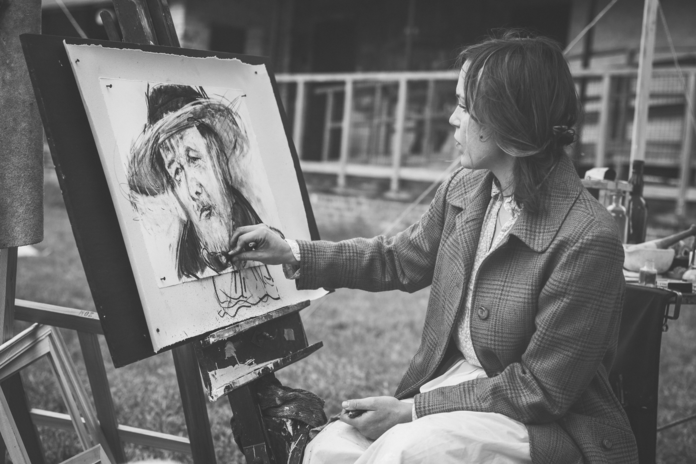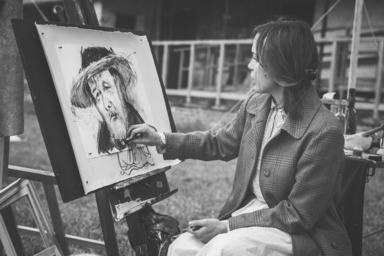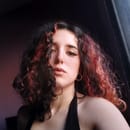“Why couldn’t they just let me be? Let me be, let me be, let me be”. And with this verses of Little Child Runnin’ Wild from Curtis Mayfield I open my thought – not in a judgemental way, but in a contemplative manner – about the exhibition of Jean-Michel Basquiat, at the Centro Cultural Banco do Brasil, in São Paulo.
The very first time that I googled the name Basquiat, to know something more about the artist who was arousing many controversial thoughts and feelings in several people on the internet, and finally learned about his importance in the art world, I came across a critical review, published at The Telegraph, that was entitled “He had everything but talent”. Reading this title, I couldn’t understand why this so self-sure person was letting that kind of offensive thoughts spit out of his mouth and, above all, in a newspaper.
After reading through the middle of the text, I realized that the review, written in 1997, didn’t differ at all from the comments made in 2018 – a progressive and avant-garde year for sure. I got to read some tweets that said things like “my nephews really could do better than he did” or “now I know I can invest in my niece’s career”.
That kind of comment is the perfect portrait of understanding art just like something to be only aesthetically pleasant in a expected and known shape. People, even nowadays, are not ready to break standards. Of course art can be aesthetically pleasant. But first: what is really aesthetic? Does it exist only in one kind? And second: why art must be aesthetic? Isn’t it more important to be meaningful?
Well, with all that settled, I can finally say: Basquiat is one of the purest essence of subversion and resilience – not only in an artistic way, but also socially. In an effervescent New York, born and raised in Brooklyn, he appears to show the voice and strength of black people in (one more) space dominated by whites: plastic arts.
Untitled (Hand Anatomy), 1982 (Photo by Bruna Frasson)
At the first pieces of Basquiat, presented by CCBB, it’s already possible to see, clearly, where it all begins. The streets – which were overflowing hip hop culture at his days – are brought to his works in the traces of spray paint, the space of the canvas being totally used and occupied, just like walls.
From ghetto walls to the canvas, he printed in every single inch of the surface his irreverent spirit and the chaos – of the city and his own (and how they were intrinsically connected). Every image of his works is so alive, visceral and vibrant that it almost seems like each part of it can jump out of the canvas at any time. I guess that’s why he was and is called a neoexpressionist.
Beyond the city and its chaos, Basquiat also showed through his pieces his fears, beliefs, traumas and obsessions. In works like Untitled (Hand Anatomy, 1982) we can see a person who suffered a serious accident at the age of eight and, after gaining an anatomy book from his mother, became obsessed with the human body.
Procession, 1986 (Photo by The Estate of Jean-Michel Basquiat, Licensed by Artestar, New York)
Or in a paint like Procession (1986), where he has poured the feeling of the black people’s fight at the States. That image didn’t seem confusing or confused. It was clear and sharp, just like him. Jean-Michel may have been recognized and respected in life, in exhibitions and in the artistic circuit, but on the streets he was just another black man trying to survive racism. According to the curator of the event, Pieter Tjabbes, when Basquiat went to an exhibition, he was the star of the night, but when he left the gallery, the taxi did not stop for him on the street because he was black.
Basquiat died of an overdose at the age of 27, but still lives as an exponent of his time.
The exhibition will last until April 1st at CCBB.



